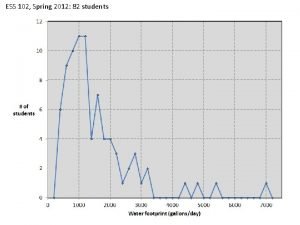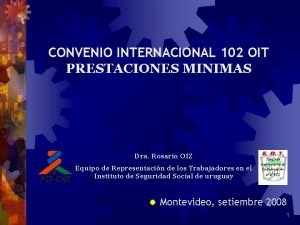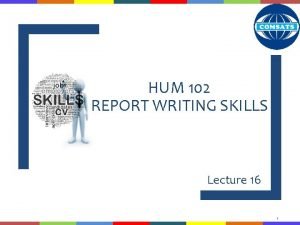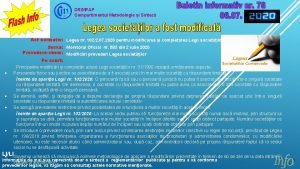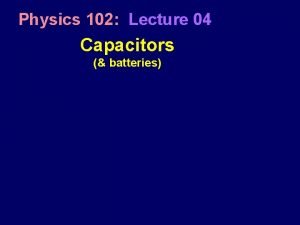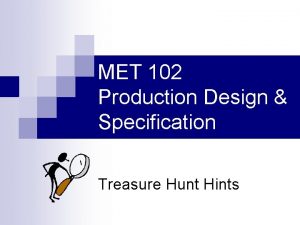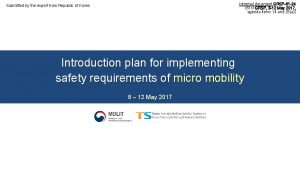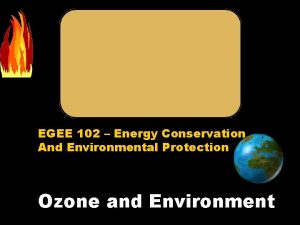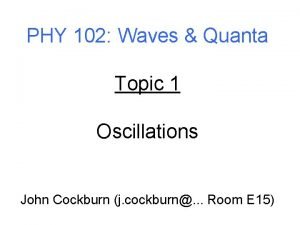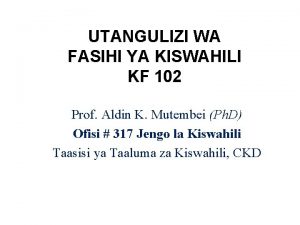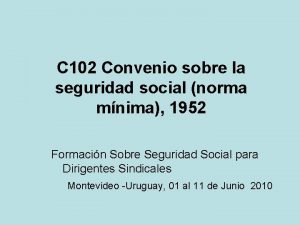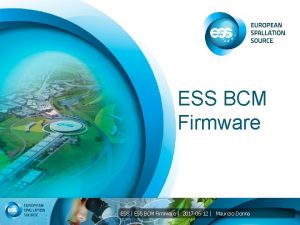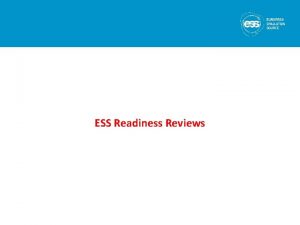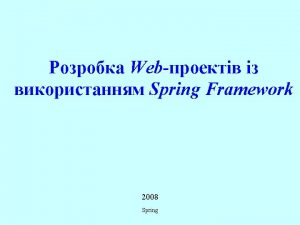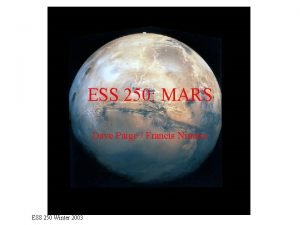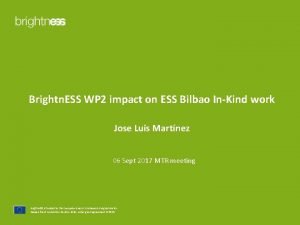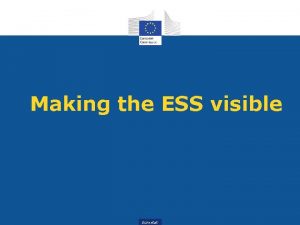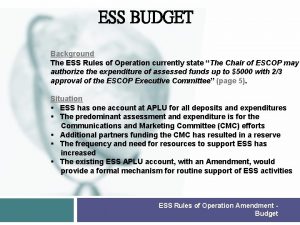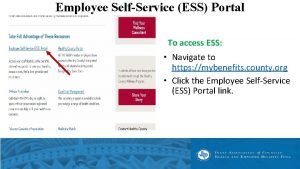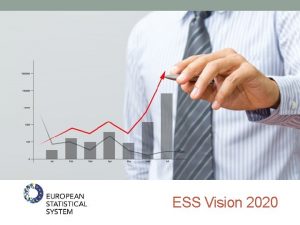ESS 102 Spring 2012 82 students ESS 102


























- Slides: 26

ESS 102, Spring 2012: 82 students

ESS 102, Spring 2012: 82 students

ESS 102, Spring 2012: 82 students (blue triangle = Tim) 100: 1 1: 1

ESS 102, Spring 2012: 82 students (blue triangle = Tim) 100: 1 1: 1

ESS 102, Spring 2012: 82 students (blue triangle = Tim) Industrial Water footprint components Food Domestic



How do the basic inputs of the water footprint calculator (www. waterfootprint. org) translate into water usage? Roughly, 1 pound of vegetables/week= 960 gallons/year 1 “ “ fruit/week = 1, 300 “ “ 1 “ “ cereal/week= 3, 700 “ “ 1 “ “ dairy/week = 4, 300 “ “ 1 “ “ meat/week = 33, 200 “ “ 1 load of laundry/week 1 10 -minute shower/day = 1, 850 = 11, 500 “ “ Each $1000 gross income = 6, 500 “ “

How do the basic inputs of the water footprint calculator (www. waterfootprint. org) translate into water usage? Roughly, 4 ounces of vegetables/day= 1, 680 gallons/year 4 “ “ fruit/day = 2, 280 “ “ 4 “ “ cereal/day = 6, 480 “ “ 4 “ “ dairy/day = 7, 520 “ “ 4 “ “ meat/day = 58, 100 “ “ 1 load of laundry/week 1 10 -minute shower/day = 1, 850 = 11, 500 “ “ Each $1000 gross income = 6, 500 “ “

Apple Water footprint: 18 gallons for one apple (18 gal. = 1” x 29 ft 2) We assume here a ¼ pound apple. One glass of apple juice costs about 50 gallons of water. Adapted from www. waterfootprint. org

Bread Water footprint: 11 gallons of water for one slice of wheat bread. Producing wheat costs 155 gallons of water pound (global average). One slice of bread has a weight of about 1 ounce, which implies a water footprint of 11 gallons. If the bread is consumed together with 1 slice of cheese (⅓ ounce), then it all together costs 24 gallons of water (24 gal. = 1” x 38 ft 2). Adapted from www. waterfootprint. org

Eggs Water footprint: 53 gallons of water for one egg (53 gal. = 1” x 85 ft 2). We assume here that one egg has a weight of 2 ounces. As a global average, eggs require 872, 000 gallons of water per ton. Most of the water is required for feeding the chickens. Adapted from www. waterfootprint. org

Milk Water footprint: 1000 gallons of water for 1 gallon of milk (1000 gals. = 1” x 1600 ft 2) Drinking a glass of milk (¼ quart) costs 53 gallons of water. Drinking the same volume of orange juice or apple juice would cost 45 and 50 gallons of water respectively. Drinking a plain glass of water requires only little more than the water itself. Adapted from www. waterfootprint. org

Beef Water footprint: 1855 gallons of water pound of beef (1855 gals. = 1” x 3000 ft 2). In an industrial beef production system, it takes an average three years before the animal is slaughtered to produce about 440 pounds of boneless beef (1” x 30 acres). The animal consumes nearly 2866 pounds of grains (wheat, oats, barley, corn, dry peas, soybean meal and other small grains), 15900 pounds of roughages (pasture, dry hay, silage and other roughages), 6340 gallons of water for drinking and 1850 gallons of water for servicing. This means that to produce one pound of boneless beef, we use about 6. 5 pounds of grain, 36 pounds of roughages, and 20 gallons of water (only for drinking and servicing). Producing the Adapted from www. waterfootprint. org volume of feed requires about 1835 gallons of water on average.

Hamburger Water footprint: 634 gallons of water for one hamburger! (634 gals. = 1” x 1000 ft 2). Most of the water is needed for producing the beef contained in the hamburger. In our hamburger we assumed there is about ⅓ pound of beef. Adapted from www. waterfootprint. org


U. S. fresh water consumption (2005) 349 billion gallons/day Domestic = 98 gal/d Total = 1180 gal/d Thermoelectric power generation (fossil + nuclear) Industry & mining Agriculture (crop irrigation, livestock, aquaculture) http: //water. usgs. gov/watuse/ Public water supply incl. domestic use



As with many challenges, finding the best solutions requires first asking the right questions. Typically, when planners and engineers see a water shortage on the horizon, they ask themselves what options exist to expand the supply. The typical answer: Get more water from a distant river, deeper wells, or a desalination plant. But as the limitations of these “supply-side” options have become more apparent, a vanguard of citizens, communities, farmers, and corporations has started asking a different question: What do we really need the water for, and can we meet that need with less? The upshot of this shift in thinking is a new movement in water management that is much more about ideas, ingenuity, and ecological intelligence than it is about pumps, pipelines, dams, and canals. This smarter path takes many forms, but it embodies two strategic attributes. First, solutions tend to work with nature, rather than against it. In this way, they make effective use of so-called ecosystem services—the benefits provided by healthy watersheds, rivers, wetlands, and other ecological systems. And second, through better technologies and more informed choices, these solutions seek to raise water productivity—the benefit derived from each liter of water extracted from a river, lake, or aquifer. Sandra Postel, Water: Adapting to a new normal. The Post Carbon Reader: Managing the 21 st Century's Sustainability Crises (Kindle Locations 1708 -1718). Watershed Media in collaboration with Post Carbon Institute. Kindle Edition.

Atmosphere Evaporation Precipitation Outside the watershed In the watershed Gaged streamflow Land surface (watershed) Runo Stream ff Infiltration Gr ou nd Soil water wa te Watershed Natural hydrologic cycle for a gaged watershed rf lo w Infiltration Ground water Transpiration (via plants)

Atmosphere Evaporation Precipitation Transpiration su Wa pp ly ste wat er Human use W at er Land surface (watershed) ff Infiltration Gr ly upp er s Wat Gaged streamflow Runo Stream ou nd Soil water wa te Natural and human-built hydrologic cycle ignoring inter-basin transfers rf lo w Infiltration Ground water

Water footprints of nations From www. waterfootprint. org Lowest: 430 gallons/(person day) Highest: 1800 gallons/(person day)

Net virtual water trade via products: exporters and importers From www. waterfootprint. org

Groundwater abstraction = nonsustainable use Groundwater abstraction (cubic kilometers/year) [1 cubic kilometer = 264 billion gallons] Wada et al. , 2012, Nonsustainable groundwater sustaining irrigation: a global assessment: Water Resources Research, v. 48.

Groundwater abstraction = nonsustainable use Groundwater abstraction (million cubic meters/ year) Wada et al. , 2012, Nonsustainable groundwater sustaining irrigation: a global assessment: Water Resources Research, v. 48.
 Traveless
Traveless Ess 102 uw
Ess 102 uw Ess 102
Ess 102 What months are spring summer autumn and winter
What months are spring summer autumn and winter Bae yong-kyun
Bae yong-kyun Miguel morayta rizal
Miguel morayta rizal Convenio 102 oit
Convenio 102 oit Hum 102
Hum 102 Legea nr. 102/2020
Legea nr. 102/2020 657 102. madde
657 102. madde Physics 102
Physics 102 Met 102
Met 102 102 graphic
102 graphic Natalis laetus tibi
Natalis laetus tibi Kmvss 102
Kmvss 102 Egee 102 home activity 4
Egee 102 home activity 4 102
102 Iat 102 sfu
Iat 102 sfu Physics 102 final exam
Physics 102 final exam Kitabu cha mulokozi 2017
Kitabu cha mulokozi 2017 Aljalal phys 102
Aljalal phys 102 Bicd 100 ucsd
Bicd 100 ucsd Amer rasheed
Amer rasheed Iat 102
Iat 102 Convenio 102
Convenio 102 Bs 102
Bs 102 102
102

